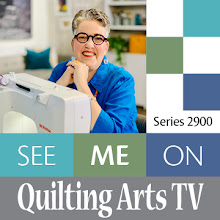I am starting work on a new piece based on this photo of a passion flower. (I took the photo at Daniel Stowe Botanical Garden more than a year ago.) It is one of two projects I am designing specifically for my Once in a Blue Moon Fiber Art Retreat, which will be held in Black Mountain, NC (near Asheville) Oct. 4-7, 2012.
I am getting very excited about the retreat. Joyce Mullis, a friend and fellow quilter who is organizing the retreat and handling registrations (she’s also a wonderful cook, and will be preparing our breakfasts and lunches!) and I are planning some really fun stuff. There are only five spots left, as we are limiting this retreat to only 25 people. We will spend the first full day constructing the fused appliqué art quilt, and the second day thread sketching it. If you are interested in learning more about the retreat, you can download a PDF flier and registration form by clicking here.
Tonight I pulled out some green fabrics to audition them with the photo. I use this process to see if I have a good range of values in the colors I need. In some ways, the value is much more important than the color. You need to have very dark values, very light values, and everything in between.
When I’m working on a piece that is highly realistic, I look for fabrics – I prefer hand-dyes and batiks – that have lots of variations in one color range, but without strong patterns or recognizable designs. Solid fabrics usually look too flat. I love working with batiks and hand-dyes because they usually are a nice heavy weight, and because their high thread count keeps the pieces from fraying too much.
I will be sharing some photos of this project as it progresses, so stay tuned!





























































